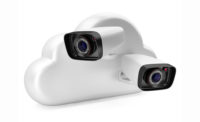Over the past several years security integrators have watched their margins shrink, while the technology world around them has shifted first to IP, and — most recently — to the cloud. This has led to an increased interest in finding new ways to generate revenue. Unlike the residential alarm space with its monitoring revenue, the RMR model doesn’t come naturally to the traditional commercial security dealer or integrator; but one of the first and most logical places to look to add recurring monthly revenue is in the access control area.
As Michael Coniff, product marketing manager for MAXPRO Cloud, Honeywell, Melville, N.Y., points out, there is a huge, mostly untapped market for these types of solutions. “What we are doing with MAXPRO is focusing on an area of the market that is very big, but fairly untouched, which is that small to medium business market,” he says. “That is the bread and butter of dealers and integrators on a daily basis. Many of them approach those situations by selling disparate hardware such as an intrusion system, video system and access control as their go-to products.”
The problem is that today most customers don’t want individual systems for their franchises, multi-tenant buildings or retail chain. “End users really don’t want multiple different solutions anymore, even just across their individual sites,” Coniff explains. “We live in a world where everything has an app and they are starting to look at security and site management in the same way. They say, ‘Why can I not just click on an app and see my 10 locations or be able to unlock a door? Why do I have to log in to this heavy piece of software over here?’” There is a mobile-first mindset today, he adds “End users are busy running their businesses; they want that instant app-style login to view video, lock and unlock doors, arm and disarm their system, and receive notifications about what matters most — all from a single login. They want this ability in the palm of their hand.”
With customers primed for cloud by their computer software agreements, banking and other services that have gone that direction, you would think it would be easy for security integrators to jump into the mix. But there is a learning curve and many integrators have been hesitant to ask a customer for a monthly fee when they are used to charging up-front and walking away with at most an annual service contract.
Here are three ways to get started on offering a cloud access control solution that will increase your RMR potential:
1. Pick the Right Customer
Cloud solutions allow security integrators to go after those businesses that have been difficult in the past to do economically without spending significant money on servers and other technology, Coniff says. “What cloud solutions enable integrators to do is create an integrated, multi-site system and provide their end user a single app that they can use to control those locations,” he explains.
“It’s just a matter of finding the right type of customer,” Coniff adds. Some of the most likely prospects include property managers, especially those with multi sites; multi-tenant properties; franchises; commercial properties where the owner or manager wants to control multiple locations from the same app; multi-site commercial buildings; remote facilities; and retail stores.
The advantage to the integrator in this type of solution is it creates a two-way customer relationship that is very tight. “Not only are they giving them app control — the ‘cool factor’ — but they are helping that customer reduce administrative costs,” Coniff explains. For the integrator, they now have a better and more effective connection with that end user. “They can offer better service, be more proactive, run automated reports and do more remotely,” he says. “Fewer truck rolls means more money in their pocket.”
2. Pick the Right Provider
Being able to go after the customers that are ready and asking for these types of solutions requires having a cloud solution or two in your pocket that can fit their needs. Coniff suggests looking for providers that are willing to help them get started and walk them through the process, especially if they are new to cloud access.
“There are a good majority of integrators looking for guidance and ideas and manufacturers like us can help them go after those end users and help make their conversations more meaningful,” Coniff says. “It does take quite a bit to get started. It is a different sell and mindset. It is really helpful working with a company that is willing to help you make that shift from box selling and really work with you as a partner in those types of services. Once you get into cloud it really does become a partnership between dealer and manufacturer. We really have to be on our game to make sure those services are always working and always online so when their customer has an issue they have someone to reach out to.”
Another way Honeywell helps its integrators and dealers is by offering a VIP onboarding process that draws from the experience of the more cloud-savvy dealers in their network. “We bring integrators in and let them talk to others having success with managed services and learn from those who do it very well,” Coniff says. They share the targets they go after with the product and teach them to go after the areas where you can only do it well with cloud-based products, he explains.
On the solutions side, there are an ever increasing number of options to consider, from pure cloud to a more hybrid approach and it is important to find out which ones will work best for you and your customers. Coniff says Honeywell took the approach that it is important to be able to ease the customer into cloud.
“In the past four or five years cloud has found its foothold,” he says. “Many companies jumped into that business and created devices that only connect to cloud,” he says. “We were actually guilty of that ourselves. But we realized quickly that by doing that we were creating an additional SKU our dealers have to hold in their stock and we were missing a great upsell opportunity. So we changed our thinking and decided to take the products our integrators use every day and make them cloud-ready and multi-purpose.”
3. Price it Right
Whether using a pure cloud product or a cloud-ready solution, one of the biggest differences between cloud access and traditional sales is in how you charge for it. This has been a bit of a hurdle for some integrators, Coniff acknowledges.
“We have experienced some integrator reluctance over the past four or five years. Particularly early on we would have integrators come to us and say, ‘I have heard about RMR but I don’t know where to start.’ That was one of our challenges over the years — converting our dealers and integrators from box sales to being OK with asking their end users for that monthly fee.”
Coniff credits the cloud-ready approach with helping clear that hurdle. “Now they can approach that 10 location customer with plug-and-play multi-purpose equipment that is not cloud dependent. That keeps their creation costs down at each location but they can now charge that managed services fee.”
As for what that fee should be, Coniff says he has seen dealers and integrators use several different methods for approaching that.
“Some larger integrators do a lower up-front install cost. Others still charge the install fee but have a lower monthly payment.” There are many ways of getting there, he says, but the good news is that cloud access is a great equalizer in that both small dealers and large integrators can benefit.
“Now we are able to allow even small dealers to keep their install and creation costs at a minimum so they can charge more on the RMR side,” he explains. “Even if they purely charge lower install and hardware costs they can recoup it a lot quicker in their RMR fees as part of their creation multiples.”
There may be a lot to learn to maximize profits from cloud RMR, but the effort will be worth it in the end, Coniff concludes. “As the industry gets more commoditized it is getting harder and harder to yield those profits just from hardware. Integrators looking for ways to generate those recurring revenues as part of their business will make their business more valuable in the long run, whether they are looking to sell or grow their business.”



